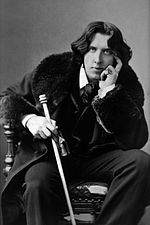No subscription or hidden extras
#men
Read through all quotes from Oscar Wilde
One evening after discussing depictions of Salome throughout history he returned to his hotel to notice a blank copybook lying on the desk and it occurred to him to write down what he had been saying. " which Wilde had begun in 1887 was first publiOscar Wilded in Blackwood's Edinburgh Magazine in July 1889. tour of Patience and selling this most charming aesthete to the American public.
At the turn of the 1890s he refined his ideas about the supremacy of art in a series of dialogues and essays and incorporated themes of decadence duplicity and beauty into his only novel The Picture of Dorian Gray (1890). After writing in different forms throughout the 1880s he became one of London's most popular playwrights in the early 1890s. As a spokesman for aestheticism he tried his hand at various literary activities: he publiOscar Wilded a book of poems lectured in the United States and Canada on the new "English Renaissance in Art" and then returned to London where he worked prolifically as a journalist.

